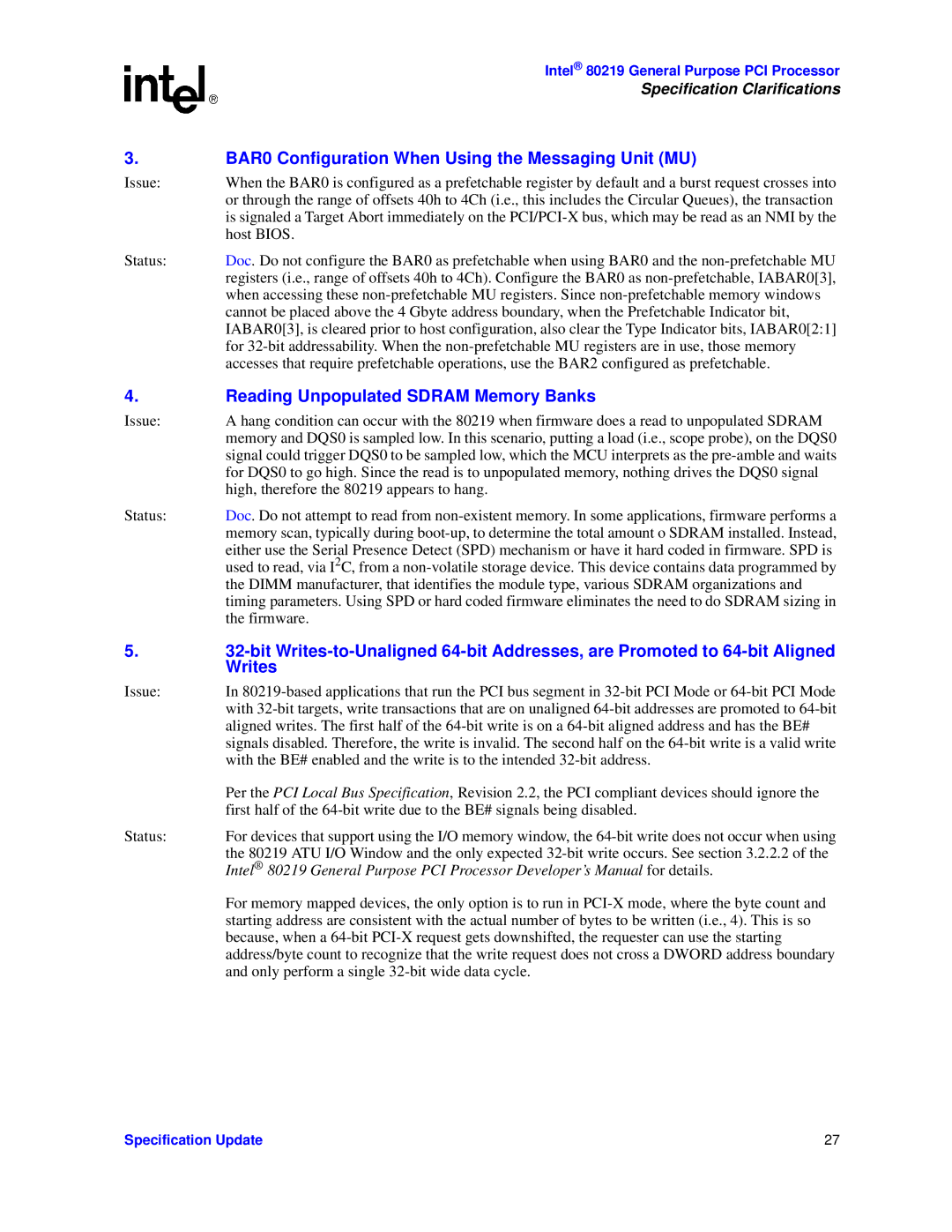Intel® 80219 General Purpose PCI Processor
Specification Clarifications
3.BAR0 Configuration When Using the Messaging Unit (MU)
Issue: | When the BAR0 is configured as a prefetchable register by default and a burst request crosses into |
| or through the range of offsets 40h to 4Ch (i.e., this includes the Circular Queues), the transaction |
| is signaled a Target Abort immediately on the |
| host BIOS. |
Status: | Doc. Do not configure the BAR0 as prefetchable when using BAR0 and the |
| registers (i.e., range of offsets 40h to 4Ch). Configure the BAR0 as |
| when accessing these |
| cannot be placed above the 4 Gbyte address boundary, when the Prefetchable Indicator bit, |
| IABAR0[3], is cleared prior to host configuration, also clear the Type Indicator bits, IABAR0[2:1] |
| for |
| accesses that require prefetchable operations, use the BAR2 configured as prefetchable. |
4.Reading Unpopulated SDRAM Memory Banks
Issue: | A hang condition can occur with the 80219 when firmware does a read to unpopulated SDRAM |
| memory and DQS0 is sampled low. In this scenario, putting a load (i.e., scope probe), on the DQS0 |
| signal could trigger DQS0 to be sampled low, which the MCU interprets as the |
| for DQS0 to go high. Since the read is to unpopulated memory, nothing drives the DQS0 signal |
| high, therefore the 80219 appears to hang. |
Status: | Doc. Do not attempt to read from |
| memory scan, typically during |
| either use the Serial Presence Detect (SPD) mechanism or have it hard coded in firmware. SPD is |
| used to read, via I2C, from a |
| the DIMM manufacturer, that identifies the module type, various SDRAM organizations and |
| timing parameters. Using SPD or hard coded firmware eliminates the need to do SDRAM sizing in |
| the firmware. |
5.
Issue: | In |
| with |
| aligned writes. The first half of the |
| signals disabled. Therefore, the write is invalid. The second half on the |
| with the BE# enabled and the write is to the intended |
| Per the PCI Local Bus Specification, Revision 2.2, the PCI compliant devices should ignore the |
| first half of the |
Status: | For devices that support using the I/O memory window, the |
| the 80219 ATU I/O Window and the only expected |
| Intel® 80219 General Purpose PCI Processor Developer’s Manual for details. |
| For memory mapped devices, the only option is to run in |
| starting address are consistent with the actual number of bytes to be written (i.e., 4). This is so |
| because, when a |
| address/byte count to recognize that the write request does not cross a DWORD address boundary |
| and only perform a single |
Specification Update | 27 |
